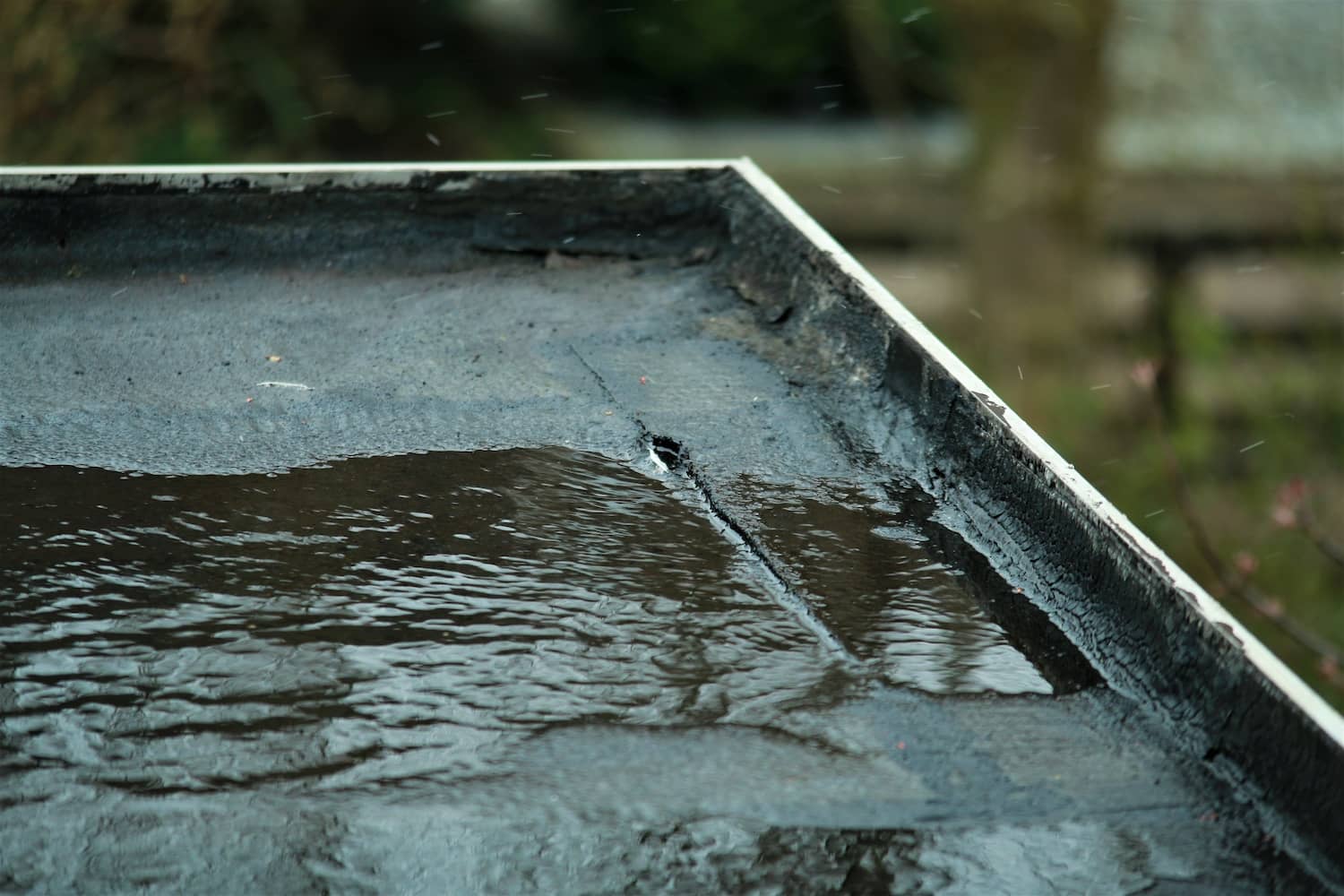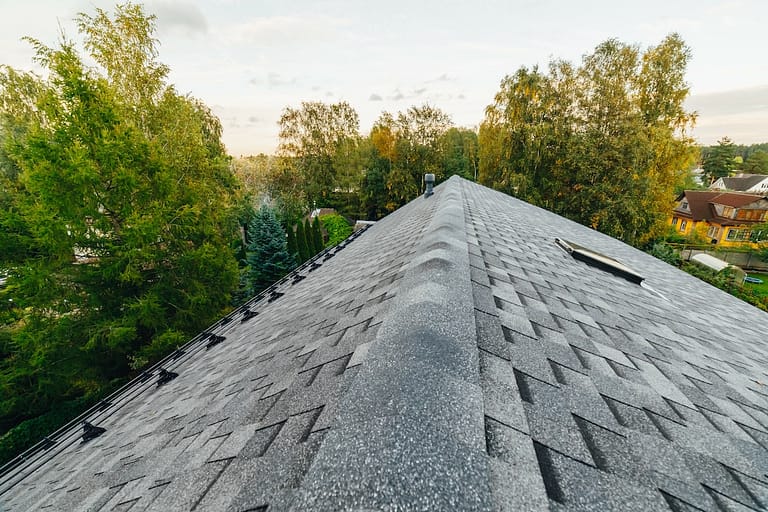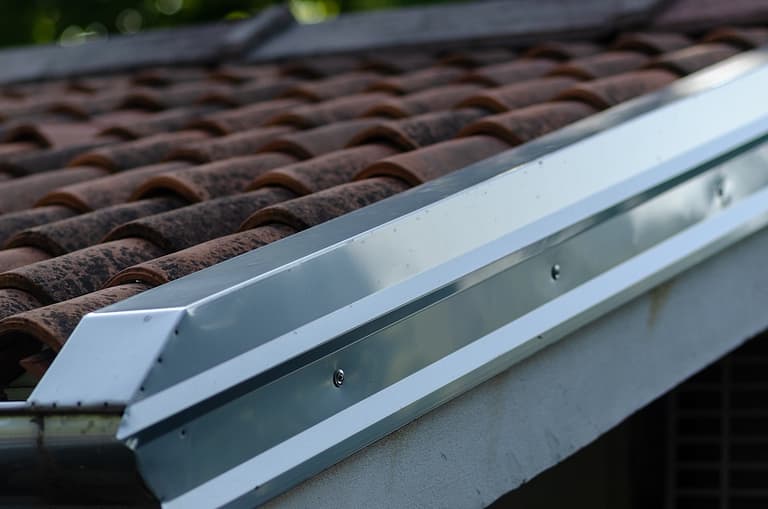Several issues can cause roof leaks, and they can be equally problematic to find. Getting to the bottom of even a small roof leak is critical, though, because free-flowing water in a home can have devastating consequences.
Whether you are dealing with obvious signs of a roof leak or want to learn how water typically behaves in that scenario, here is how to find a roof leak and what roof repair you can do to fix the leak.
How To Find A Roof Leak
Finding roof leaks usually takes a lot of detective work because, with most roof leaks, where the leak appears inside does not automatically mean you have found the source. Here are some tips to help you figure out the clues, track down and locate the source of your leaky roof and then figure out what roof leak repair is best for you.
Inspect the Entire Roof
Look for damaged shingles (torn, bent, and missing shingles) or punctured roof sheathing. A single damaged shingle can cause small leaks in multiple places as water penetrates the interior of the home. Also, identify torn metal flashing exposed nails, missing nails, or small holes from broken nails. Check the sealant around all piping, chimneys, and roof vents.
Check Gutters, Skylights, Etc.
Sometimes, leaks occur in areas that are not technically the roof itself. Look for water leaks from damaged vents, gutter connection points, rotted framing, and around the perimeter of skylights.
Also, search for a water stain from a potential roof leak on interior walls, exterior walls, and at any point of connection with your home.
Look for Ice Dams
If your leak happens in the winter during extreme weather, when the frost melts or snow piles up on the roof, you might have an ice dam problem. Ice dams can cause pooling water that backs into crevices and works into your home.
Check the Underlayment, Beams, and Joists
A roof leak almost always leaves a trail. In many cases, at the source of a roof leak, other colors from chemicals or roofing materials may color water stains black, cream or white.
Look for the following telltale signs:
- Discolored underlayment or wet attic ceiling
- Early signs of mold around water stains
- Streaking on beams and joists and ceiling connection points
- Punctures or objects that have pierced through the roof
Any discoloration, streaking, or wet spots mean moisture has made its way into your attic at that point. If there is no obvious seam or join that shows evidence of leakage, you might be dealing with a damaged roof from a storm or a small leak caused by a nail or staple that punctured through the underlayment.
There is also a chance that mold or mildew will take hold at and around the leak spot. If you smell mildew or see mold growth, follow that to its source. In most cases, that is where your leak will be located.
Inspect your entire underlayment, beams, and joists because a roof with one leak likely has more.
Check the Attic Floor
Sometimes water stained wood will not show up unless it is wet. Because of that, check the floor and look for moisture or pooling. You can also look for staining on the floorboards if you have an older attic. The staining can vary in color depending on what the water has run through to get to that point, including looking yellowish to white.
Inspect Roof Penetrations and Connection Points
Look around any chimneys, light fixtures, plumbing, and step flashing for a potential leak source. A leak source could be broken or rotted sealant or damaged flashing. Always look for staining and mold.
Garden Hose It
When roof leaks are hard to find, use a garden hose and run water onto your roof. Have a helper look on the inside to see where water comes through. Divide your roof into zones and saturate each zone in water.
After about five minutes of running water on the zone, wait for 15 to identify the leaking section. From there, you can investigate where the roof leak is.
How To Repair a Leak
Once you have found the source of the leaky roof, there are several repair options you can use depending on the cause.
Re-Shingle, Flash, Seal, and Plug
You may have a simple DIY fix if you can identify the leak. The fix might entail replacing shingles, sealing around seams and connection points for plumbing, vents, and chimneys, or replacing flashing.
If a puncture from a nail causes a leak, you can plug the hole with a waterproof sealant both at the ceiling entry point and externally. Skylight and plumbing seams can be resealed. Another solution is to install plumbing vent boots on any protruding piping after caulking the seams around the piping.
Clear Out Obstacles
If the cause of the leak is pooled water caused by an obstruction, you will need to remove the obstruction. Cleaning your gutters is one way to avoid pooling water, backing up, or forming dams. Removing snow from your roof in winter can also avoid dams and melting snow buildup.
Hire a Professional Roofer
In any situation involving a leak, your best bet is to get a professional to look at what you have found and recommend a course of action. The benefit of having a professional fix your roof, especially on older roofs, is that it will be fixed right the first time. The drawback is that it does cost money.
The trick is knowing when to call in professionals to get free estimates. A good rule of thumb is to bring in a professional whenever you are not completely certain you can fix the leak.
Final Thoughts
Leaks are nothing to take lightly because they can do a lot of damage to your home, including weakening its structure. Using these tips and common sense will ensure you identify the source of the leak, fix it and leave your roof in good shape.







